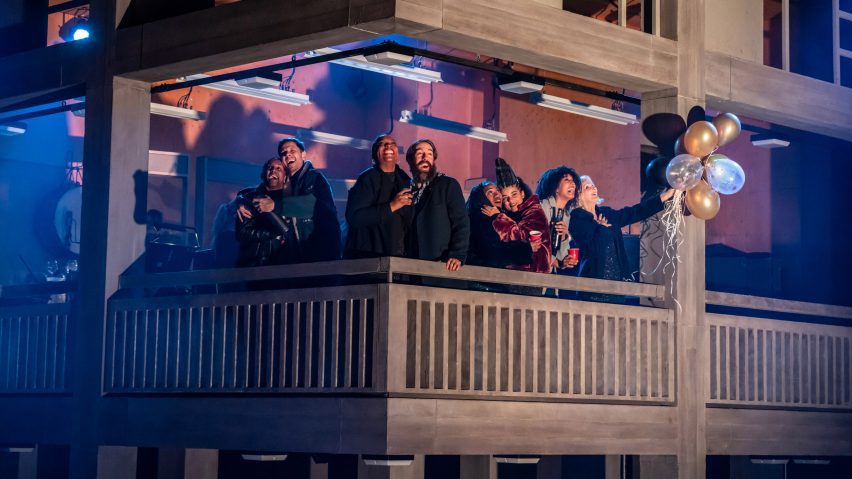
Park Hill estate reimagined as set for musical about Sheffield
A model of Park Hill estate created by stage designer Ben Stones forms the set for Standing at the Sky's Edge, a musical about modern Britain told through stories of life in Sheffield.
Standing at the Sky's Edge simultaneously tells the tale of three generations of people living at Park Hill – a brutalist Grade II*-listed housing estate in Sheffield – over the past six decades.
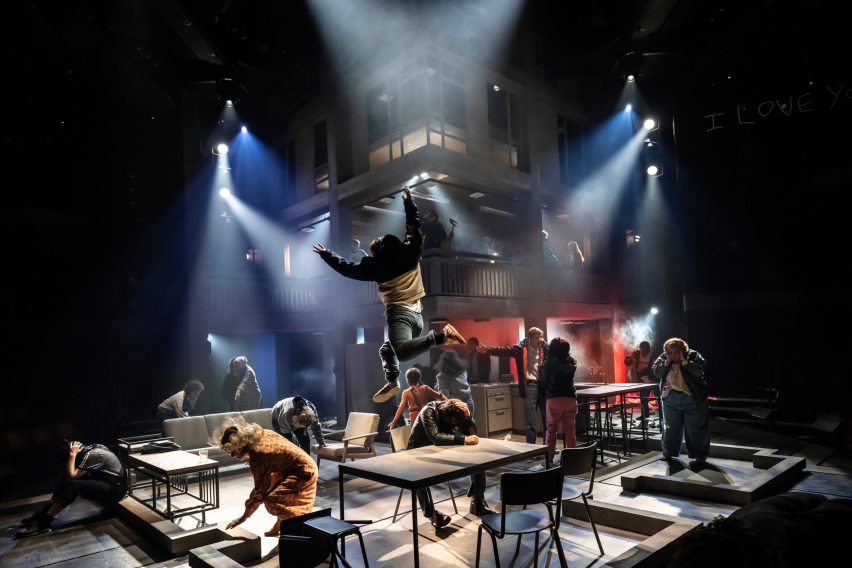
Stage designer Stones aimed to create a set that resembled the iconic building, taking into account significant changes in its appearance and reputation since its completion in 1961.
To do this, he meticulously studied the estate through site visits and by looking at floor plans to recreate it at a scale that was both realistic and appropriate for a theatre.
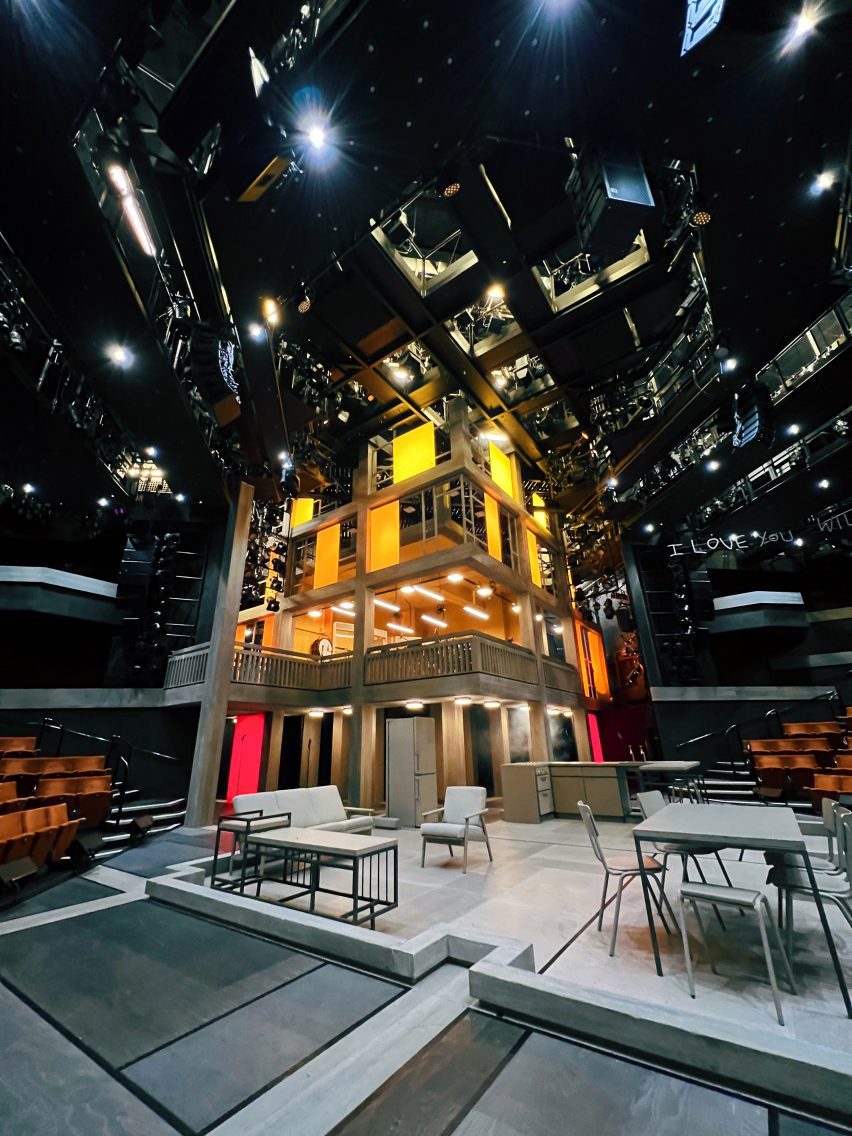
"I had to study the building intensely," Stones told Dezeen. "For me, it was about echoing the proportions so that it retained the original DNA of this iconic building."
"It was key for me to not lock the set in the present day, which would be the easy answer, but to blend all six decades seamlessly so that the audience can imagine the world around the characters with just a few clues from the costumes and props to help locate them in time."
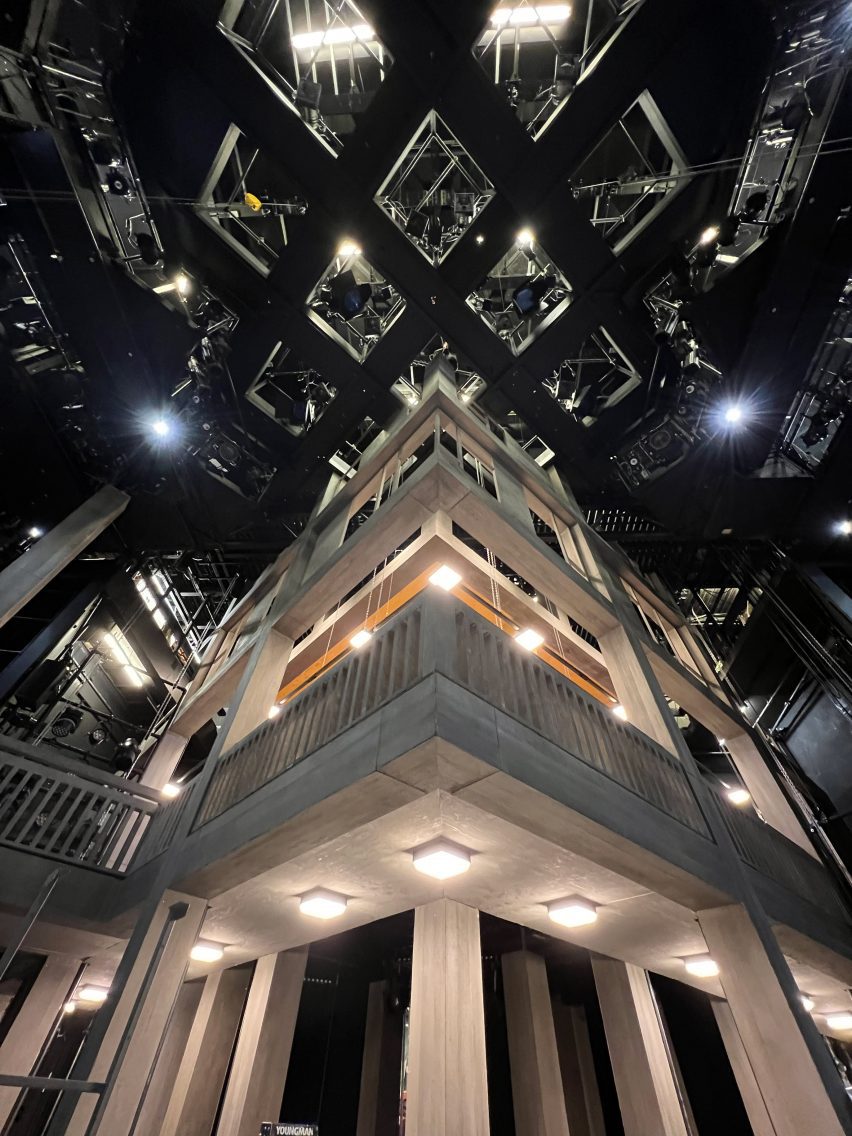
Park Hill is a former social housing estate that was designed for Sheffield City Council by architects Ivor Smith and Jack Lynn. It is best known for its gridded concrete shell and its "streets in the sky" typology.
Following years of decline, property developer Urban Splash won a contract to renovate the estate in 2004. This process began with Phase 1 by studios Hawkins\Brown and Studio Egret West, and most recently Phase 2 by Mikhail Riches, which is touched on in the story's narrative.
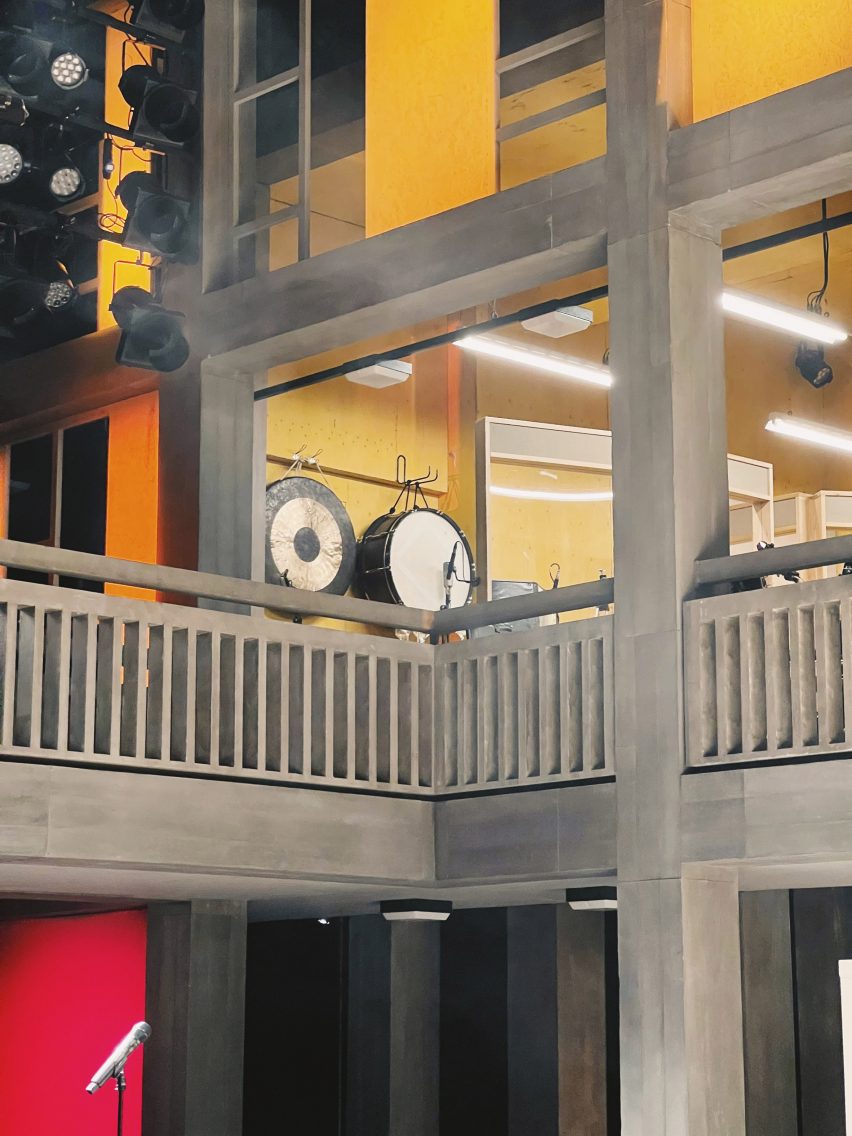
Stones described designing the set for the play as a "daunting" process, due to Park Hill's significance in Sheffield – a city he spent a lot of time in growing up – but also in the world of architecture.
"It's a building I've seen looming over Sheffield since I was a child," he said. "One that has divided opinions in the city for decades."
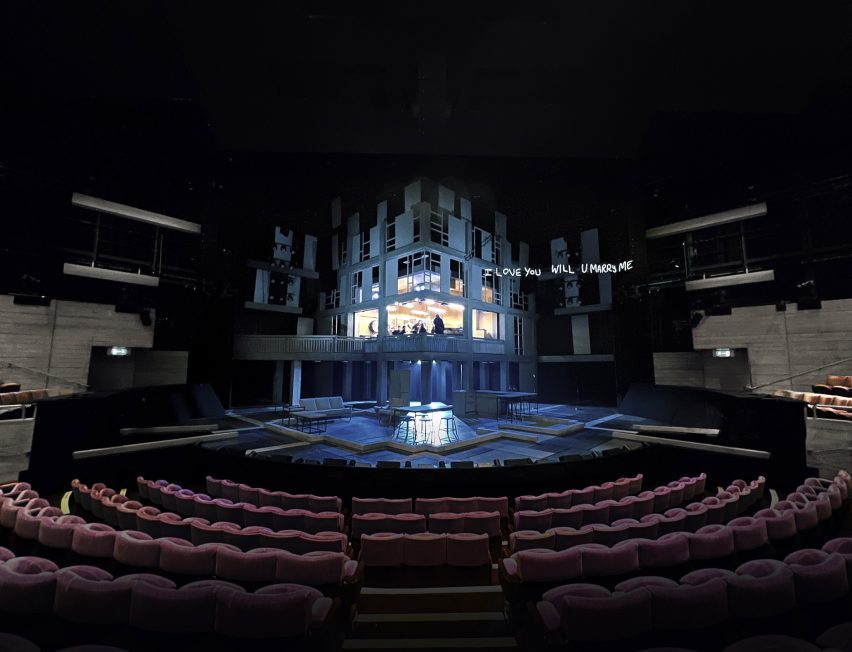
Stones' set design comprises the main model of a Park Hill elevation, which incorporates an elevated walkway along which the actors can walk and where the band sits.
Below this is the main stage area, which contains the outline of an apartment, set to a backdrop of columns similar to the openings in Park Hill's gridded structure.
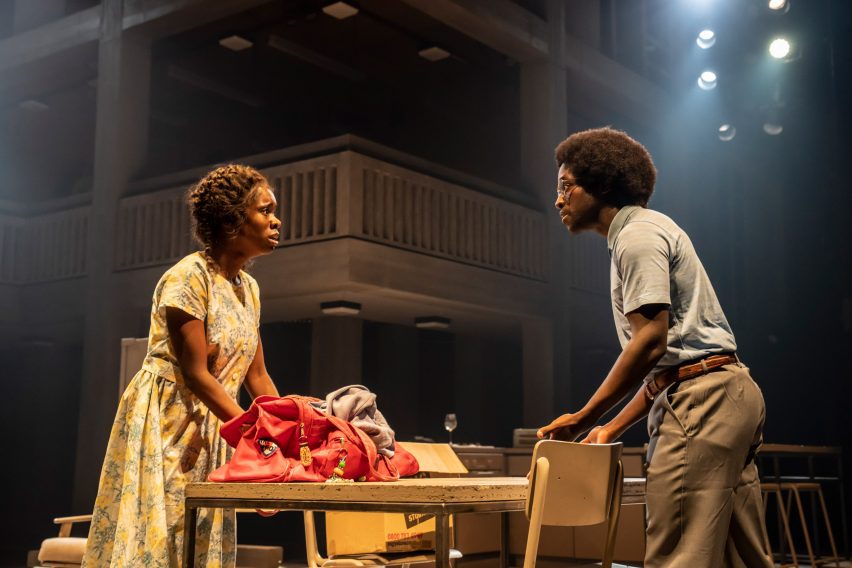
It is designed to ensure the three different storylines could run simultaneously without the need for significant changes in the set.
"We tried various ideas to stage three separate rooms onstage but none really worked," Stones explained. "It became really clear that the focus must be on one flat, and that the characters are like ghosts passing each other through each decade."
The furniture used in the apartment has a mid-century look, chosen by Stones to help tell each story – one that is based in the 1960s, another in the 1980s, and the third in the modern day.
"In the 1960s storyline, I imagined this as first-time furniture fresh for new families, and in the 1980s this furniture would have fallen behind in fashion and become unkept," he explained. "In the present day timeline, this furniture has become fashionable again."
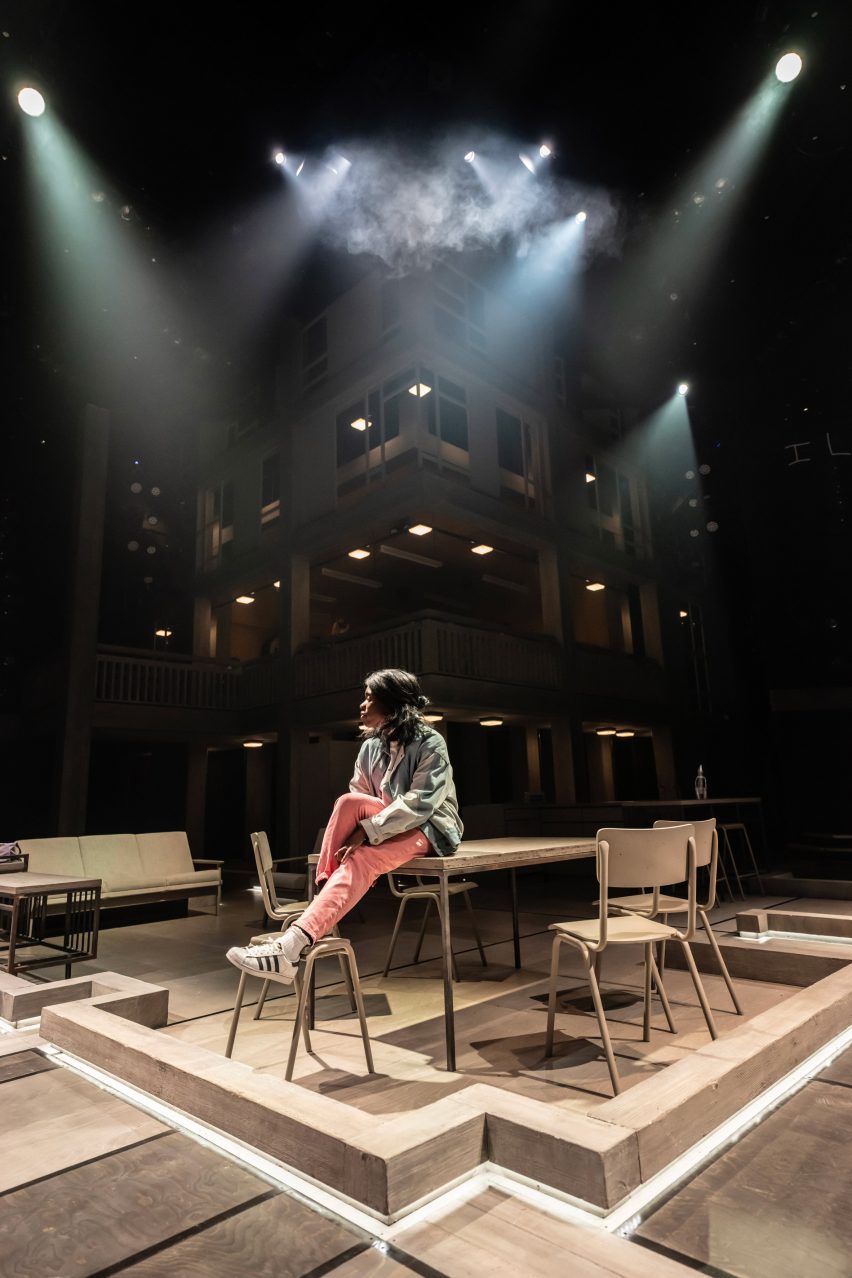
The structure itself was constructed from a mix of plywood, birch and OSB, along with aluminium trusses. To achieve the look of concrete the wooden elements were covered in layers of paint.
Stand-out moments of the set design included a suspended neon light that reads "I Love You Will U Marry Me". This replicates graffiti on one of the bridges at Park Hill, written by a young man living in Sheffield called Jason Lowe for his girlfriend, which has since become an iconic symbol of the city.
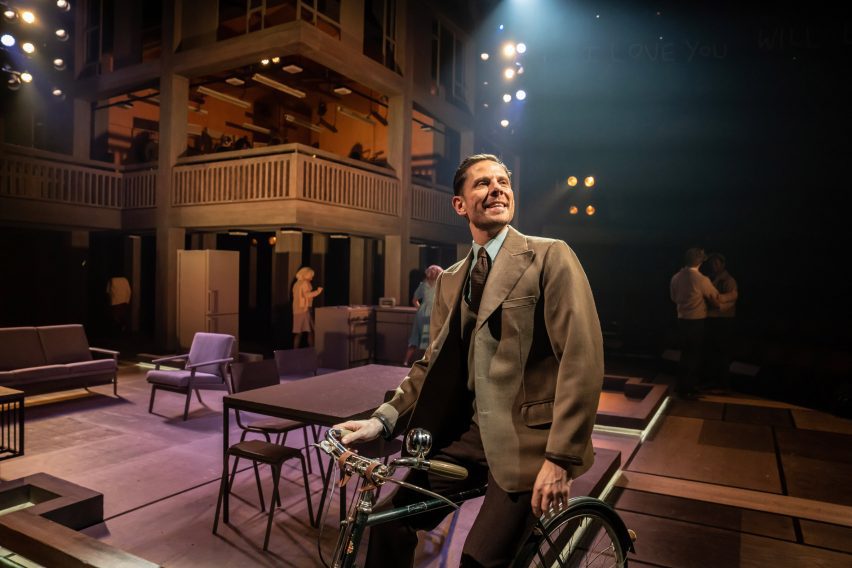
Stones has also introduced chipboard details, echoing the boarded-up flats at Park Hill during the 1990s and early 2000s, while wooden flooring nods to the present-day flat interiors.
The upper level that is occupied by the band is lined with warm wood, intended to echo the commercial units at Park Hill today that are used by various media companies.
Stones' favourite detail of the design is how the facade is lit up in reds, oranges and yellows, during the finale, evoking the facade panelling of Phase 1 and serving as "a final image of hope", he said.
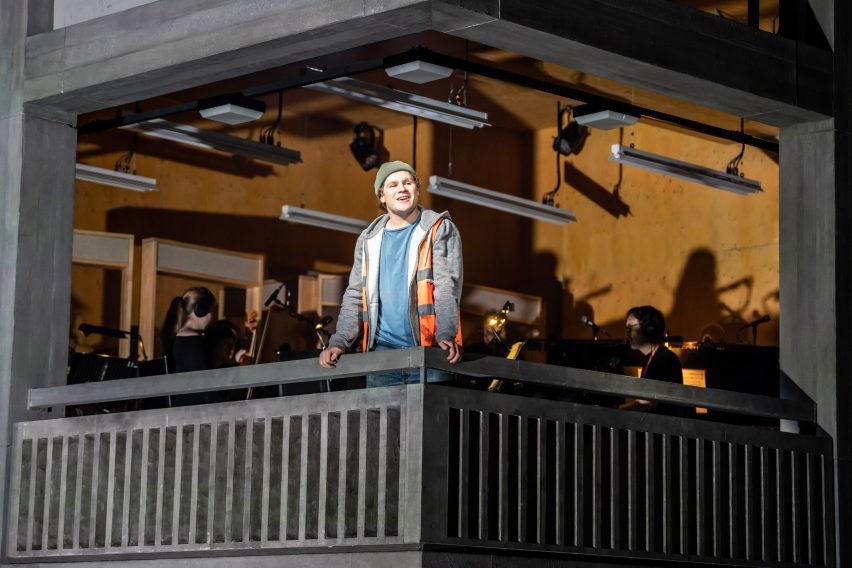
Standing at the Sky's Edge is on show in London, appropriately at the brutalist National Theatre, until 25 March 2023. Previously it was on show at the Crucible theatre in Sheffield.
It was directed by Robert Hastie based on a book by Chris Bush, with music and lyrics by Richard Hawley.
Other architectural set designs recently featured on Dezeen include French interior designer Pierre Yovanovitch's curvilinear staircase for Theatre Basel's production of Verdi's Rigoletto, and stage designer Lewis James' roof-like structure for a performance by British rapper Slowthai.
The photography is by Johan Persson unless stated otherwise.